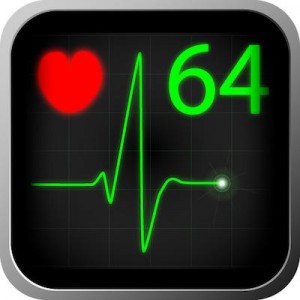-
Heart Rate Monitors
- Posted onjofrancis
- in Uncategorized
- onFebruary 21, 2017
- No Comments.
 When you’re exercising, it can be very hard to perceive your level of effort and intensity. You can try and grade it on your breathing, and whether or not you can hold a conversation, but a heart rate monitor is a great tool to enable you to find out exactly how hard or not, you’re working, based on your heart rate. It’s ideal for finding that exercise “sweet spot” – where you’re pushing your body at the right intensity level to achieve your specific goals, without overdoing it and risking injury or over-exertion.
When you’re exercising, it can be very hard to perceive your level of effort and intensity. You can try and grade it on your breathing, and whether or not you can hold a conversation, but a heart rate monitor is a great tool to enable you to find out exactly how hard or not, you’re working, based on your heart rate. It’s ideal for finding that exercise “sweet spot” – where you’re pushing your body at the right intensity level to achieve your specific goals, without overdoing it and risking injury or over-exertion.When you use a heart rate monitor whilst training, you can work out the different heart rate zones and intensities so that you train appropriately – ensuring that the level of training is correct for fat burning, aerobic fitness, endurance, or whatever the particular focus of your session is.
The Mayo Clinic have a handy article (here) that explains how to work out what your maximum heart rate should be, and then how to determine your “target zone”. The article goes on to help you work out if you’re “in the zone” manually via checking your pulse, and this is where a heart rate monitor can step in and aid you, as pulse checking can be a little tricky mid workout!
As a guide for running:-
Zone % of Heart Rate Reserve Long, slow runs, easy or recovery runs 60-70% Aerobic zone or “target heart rate zone” 70-80% Anaerobic zone 80-90% VO2 max “Red line zone” 90-100% As a guide for cycling:-
Zone % of Heart Rate Reserve Long, easy rides 60-65% Longer rides of medium stress 65-75% Develop aerobic capacity and end endurance 75-82% Raising anaerobic threshold 89-94% High intensity interval training 94-100% There’s another interesting article here – An inconvenient truth – why heart-rate always matters.
As the season is just getting started, you may well be checking to see if you have everything you need for your forthcoming training, and a heart rate monitor is definitely something to think about.
Having assessed the current marketplace, it would appear that the most popular wrist based heart rate products are:-
Fitbit Charge HR and Fitbit PurePulse
Many of the above brands also offer the more traditional heart rate monitors which come with a chest strap and if budget is key, then this may be the more cost effective option.
How do you know what to choose, what’s right for you and what you need?
Obviously, budget will have a major part to play. Lower budget will dictate that you opt for a chest strap type of heart rate monitor and it’s upwards from there to around the £400 mark, which will get you an all singing, all dancing, top of the range heart rate monitor with GPS and a multitude of other functions.
When thinking about this as a piece of tech, make sure that as well as doing what you want it to do in terms of tracking your heart rate, you might also want to ensure that it’s compatible with your smartphone, that it has a decent battery life and that it gives you all the data you want out of it.
thetrilife.com are not sponsored by any of the mentioned brands, nor are we endorsing any of these products. Our findings are based on researching the market and the information is purely supplied to give an overview of what is available. We strongly recommend that you select a product that suits your own needs and budget.
If you enjoyed this article please consider sharing it!




